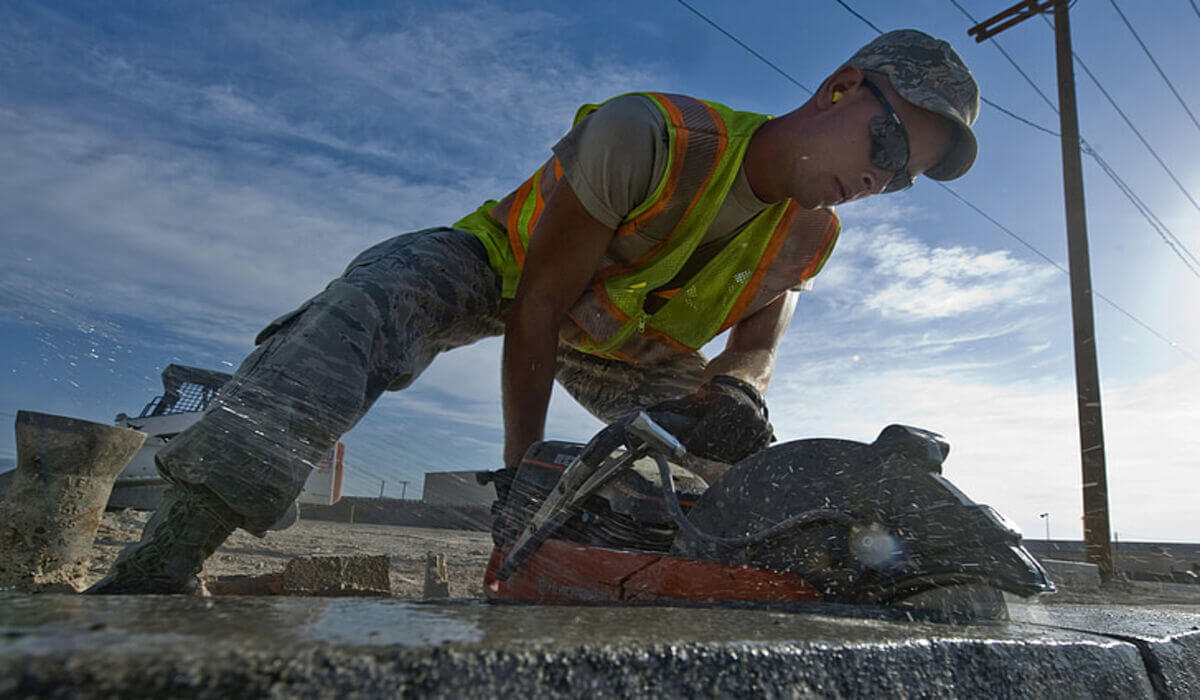Concrete is one of the most commonly used construction materials because of the factors like durability and versatility. You cannot build a modern building without the use of concrete.
However, concrete's environmental impact, particularly during cutting and drilling, is often underestimated. In this blog, we will explore the sustainability challenges associated with concrete cutting and drilling and explore innovative approaches to reduce their environmental footprint.
Environmental Impact of Traditional Concrete Cutting Methods
Concrete cutting and drilling are crucial for the alteration, demolition, and renovation of structures. This process is essential for various construction and infrastructure projects. However, it's important to recognise that these activities have their own environmental impacts.
- Dust and Particulate Matter: The cutting and drilling of concrete generate dust and particulate matter that can contain harmful substances like silica, which poses health risks to workers and can harm air quality in the surrounding area.
- Noise Pollution: The machinery used for cutting and drilling concrete can be extremely noisy, leading to noise pollution that can disturb local communities and harm both humans and wildlife.
- More Energy Consumption: The equipment used in these processes, such as diamond blades and drilling machines, consume a significant amount of energy, often derived from fossil fuels, contributing to greenhouse gas emissions.
- Waste Generation: Concrete cutting and drilling create waste materials, including leftover concrete pieces and slurry. Improper disposal of these materials can have a negative impact on the environment.
- Water Usage: Water is often used to control dust during concrete cutting and drilling, and the excessive use of water can strain local water resources and harm ecosystems.
Sustainable Solutions to Lessen the Impact of Concrete Cutting
The construction industry is increasingly recognising the need for sustainability. To address the environmental impact of concrete cutting and drilling, several innovative solutions have emerged:
- High-Quality Equipment: Upgrading to modern, energy-efficient equipment reduces energy consumption and emissions. It is also quieter and more precise, minimising noise pollution and dust.
- Water Recycling: Implementing water recycling systems can reduce the water consumption associated with concrete cutting and drilling, ensuring minimal impact on local water resources.
- Dust Control Measures: Using advanced dust control systems and personal protective equipment for workers can help minimise dust emissions and protect the health of workers.
- Waste Management: Proper disposal and recycling of waste materials generated during concrete cutting and drilling is essential to minimize the impact on the environment.
- Alternative Materials: Exploring alternative construction materials that have a lower carbon footprint, such as recycled aggregates or more sustainable types of concrete, can also reduce the environmental impact.
- Compliance with Regulations: Building contractors should know local and state regulations and get the necessary permits. They should also implement the best practices in minimising dust emissions, waste management and noise control.
- Site Inspection and Assessment: The contractors should inspect the project site and note factors like the type and thickness of concrete, and potential hazards. They should also check whether there is any need for specialised equipment. Noting such information will help the contractors in estimating the emission of dust, noise, and waste produced throughout the project period.
- Using Wire Sawing Technology: In concrete wire sawing, the cuts are precise and accurate, thus creating less mess. It’s used to cut hard objects like concrete and steel as it gives accurate and fine cuts. They are faster and more efficient than using traditional saws. Many construction, mining, oil, and gas companies have adopted this new technology to create less mess and efficient cuts.
Conclusion
Concrete cutting and drilling play a vital role in the construction industry, but their environmental impact is a concern that you should not ignore. Sustainability in the industry can be achieved when you address issues like carbon footprint, energy consumption, waste generation, and other environmental aspects associated with these processes.
By using innovative techniques and equipment, implementing responsible waste management, and considering alternative materials, you can contribute to a more sustainable and eco-friendly construction sector. This shift toward sustainability is not just an ethical choice; it's a necessity in the face of climate change and environmental challenges.








